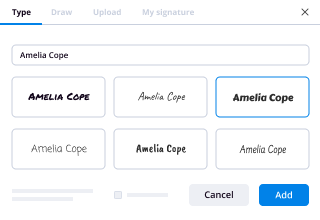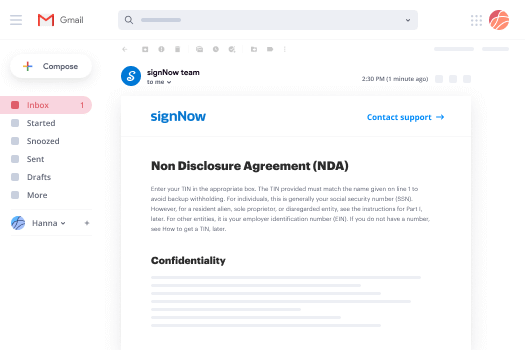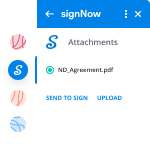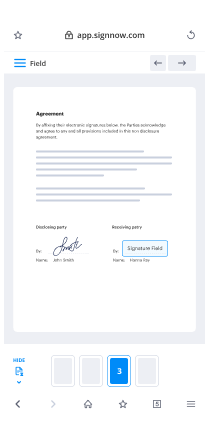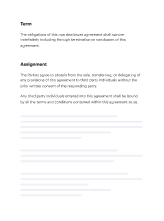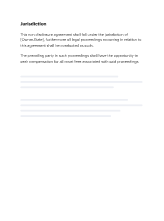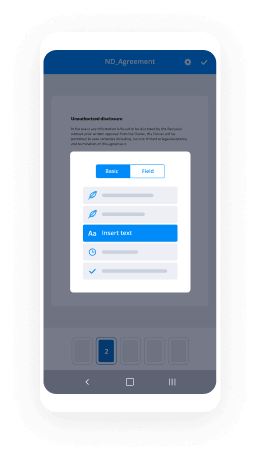First/Dep Review/Perm Pla. Hrg Or (FDPRHO, DPRHO, ORPP) - Page 1 of 15WPF JU 03.0500 (12/2017) - JuCR 3.9; RCW 13.34.046, .130, .136, .138, .145Superior Court of WashingtonCounty of _______________________ Juvenile Court Dependency of:D.O.B.: No:Order after Hearing : First Dependency Review (FDPRHO) Dependency Review (DPRHO) Permanency Planning (ORPP) Clerk’s Action Required. Paragraphs
2.9 (
CPR NSP CRD IPM
PCT NFA GCF), 3.13 (EDL/WDL),
and the boxes below.
The court will hear interim review dependency review permanency planning
_________________________ (type of hearing) on (date) _______________________ at
_________ a.m./p.m. at: ___________________________________, Court, Room/Department:
_______________, located at:
_________________________________________________________________________
__________________________________________________________________________________.Additional Clerk’s Action Required: Enter the code(s) that apply .About today’s hearing:Was adequate and timely notice given to the child’s caregiver? Yes (CGATN) No (CGNATN) Did the court receive a caregiver report? Yes (CGRR) / No The caregiver appeared. Did the court give the caregiver an opportunity to be heard? Yes / No I. Hearing 1.1 The court held a hearing on _____________________________________ [date].1.2 The following persons appeared at the hearing: Child Child's Lawyer Mother Mother's Lawyer Father Father's Lawyer Guardian or Legal Custodian Guardian's or Legal Custodian's Lawyer Child's GAL GAL's Lawyer DSHS/Supervising Agency Worker Agency’s Lawyer Tribal Representative Current Caregiver Interpreter for mother father Child’s Educational Liaison
First/Dep Review/Perm Pla. Hrg Or (FDPRHO, DPRHO, ORPP) - Page 2 of 15WPF JU 03.0500 (12/2017) - JuCR 3.9; RCW 13.34.046, .130, .136, .138, .145 other ___________________ Other ___________________________ 1.3 The order is agreed contested. The court heard testimony from: ____________________________________________. The child is 12 years old or older and the court made the inquiry required by
RCW 13.34.100(7). II. Findings General2.1 Child’s Indian status: On this date On _______________, the court asked each participant
on the record whether the participant knows or has reason to know the child is an Indian child. There is not a reason to know the child is an Indian child as defined in RCW 13.38.040
and 25 U.S.C. § 1903(4), based upon prior findings and order(s). The federal and
Washington State Indian Child Welfare Acts do not apply to these proceedings. There is reason to know the child is an Indian child as defined in RCW 13.38.040 and 25
U.S.C. § 1903(4), based upon prior findings and order(s). The federal and Washington
State Indian Child Welfare Acts apply to this proceeding. The notice and evidentiary
requirements of the federal and Washington State Indian Child Welfare Acts were found
in previous hearings and are incorporated here by reference.DSHS/Supervising agency made active efforts by actively working with the parent,
parents, or Indian Custodian to engage them in remedial services and rehabilitative
programs to prevent the breakup of the Indian family beyond simply providing referrals to
such services, but those efforts have been unsuccessful.Other: . 2.2 The child’s current caregiver was informed of this proceeding and his or her right to be heard by
the court as required by Chapter 13.34 RCW.2.3 Pursuant to RCW 13.34.030, the child was found to be dependent as to the mother father guardian/legal custodian and a disposition order was entered. 2.4 In the previous review period, the permanency plan in effect for the child has been: Primary: Alternative: Return of the child to the home of the mother father guardian or legal custodian; Adoption; Final non-parental custody order pursuant to Chapter 26.10 RCW or
the equivalent laws of another state or a federally recognized Indian
tribe;Title 13 GuardianshipLong term relative or foster care, for children between 16 and
18 years of age, with a written agreement; Responsible living skills program; and/orIndependent living for children 16 and older. 2.5 The placement and permanent plan: are still necessary and appropriate.
First/Dep Review/Perm Pla. Hrg Or (FDPRHO, DPRHO, ORPP) - Page 3 of 15WPF JU 03.0500 (12/2017) - JuCR 3.9; RCW 13.34.046, .130, .136, .138, .145 are no longer necessary and appropriate and the placement shall be modified as stated
in Paragraph 3.3.are no longer necessary and appropriate and the permanent plan shall be modified as
stated in Paragraph 3.19.have been accomplished because the court entered a parenting plan, residential
schedule, or nonparental custody decree, which is in the child’s best interests, and which
implements the permanent plan of care.long-term foster or relative care has been achieved. 2.6 The child is 16 years old or older and the court has approved a permanency plan other than
Return Home, Adoption, Title 13 Guardianship, or final non-parental custody order pursuant to
chapter 26.10 RCW for the following compelling reasons:________________________________________________________________________________________________________________________________________________.2.7 The child is 14 years old or older and the court makes the following findings: The child was present for today’s hearing. The court consulted with the child in an age-
appropriate manner regarding ongoing opportunities to engage in age or developmentally
appropriate activities. The child was not present for today’s hearing. The child does does not have regular, ongoing opportunities to engage in age or
developmentally appropriate activities. DSHS/Supervising agency has taken the following steps to ensure the child’s placement is
following the reasonable and prudent parent standard as defined in 42 U.S.C. §675(10)(A): . 2.8 DSHS/Supervising agency has has not made reasonable efforts to implement and finalize
the permanent plan for the child. 2.9 The child has been in out-of-home care for 15 of the last 22 months since the date the
dependency petition was filed and:termination petition has already been filed. DSHS/Supervising agency should file a termination petition pursuant to RCW
13.34.136(3).A termination petition should be filed pursuant to RCW 13.34.138(2)(d).Good cause not to require the filing of a termination petition exists because of the
following: (CPR) The child has been placed in the care of a relative. (NSP) DSHS/Supervising agency has not provided the child’s family with
the services that are necessary for the child’s safe return home. (CRD) DSHS/Supervising agency has documented a compelling reason
as the basis for its determination that filing a termination petition
would not be in the best interests of the child.
First/Dep Review/Perm Pla. Hrg Or (FDPRHO, DPRHO, ORPP) - Page 4 of 15WPF JU 03.0500 (12/2017) - JuCR 3.9; RCW 13.34.046, .130, .136, .138, .145(IPM) The parent is incarcerated, or the parent’s prior incarceration is a
significant factor in why the child has been in foster care for 15 of
the last 22 months, DSHS/Supervising agency has not
documented another reason why it would be otherwise
appropriate to file a petition, and the parent maintains a
meaningful role in the child’s life, because: . (PCT) The parent has been accepted into a dependency treatment
court program or long-term substance abuse or dual diagnoses
treatment program and is demonstrating compliance with
treatment goals. (NFA) The parent was court-ordered to complete services necessary
for the child’s safe return home. The parent filed a declaration
under penalty of perjury that the parent is financially unable to
pay for those court-ordered services and that DSHS/Supervising
agency was unwilling or unable to pay for those services
necessary for the child’s safe return home. (GCF) Other: _____________________________________________ ______________________________________________________________________________________________________.Reports2.10 The DSHS/Supervising agency report was was not timely submitted. 2.11 The child’s guardian ad litem attorney has has not made a report to the court. The guardian ad litem has met with or personally observed the child in the past review period. The guardian ad litem has not met with or personally observed the child in the past review
period because: ____________________________________________________________________________________________________________________________________________________.2.12 The child’s educational liaison, (name) ____________________ has has not made
a report to the court. The current educational liaison should continue.It is no longer appropriate for the current educational liaison to continue because:
_______________________________________________________________. DSHS/Supervising agency recommends that the court appoint
(name) ________________________ to serve as the child’s educational liaison. 2.13 The following other parties submitted reports to the court:__________________________________________________________________________.Placement2.14 Placement of the child:
First/Dep Review/Perm Pla. Hrg Or (FDPRHO, DPRHO, ORPP) - Page 5 of 15WPF JU 03.0500 (12/2017) - JuCR 3.9; RCW 13.34.046, .130, .136, .138, .145A. Return Home The child has been residing in foster care. A reason for removal of the child as set forth
in RCW 13.34.130(2) no longer exists and the child should be placed in the home ofthe mother father under the supervision of DSHS/Supervising agency and the
continuing jurisdiction of the court. DSHS/Supervising agency has has not identified all adults known to be residing in
the home and has has not conducted background checks on those persons.
The mother father has identified the following persons as potential caregivers for
the child: ____________________________________________________________________________________________________________________________________________. B. In Home The child has been placed in the home of the mother father for a period of six
months. The dependency should be dismissed. The permanency plan of return to the mother father has been achieved and court supervision is not needed. Court supervision should remain in effect. The placement of the child with the
mother father should remain in effect under the supervision of DSHS/Supervising
agency subject to further review by the court.
C. Out of Home Currently out of the home: The child remains placed out of home. There is a continuing
need for out-of-home placement for the child and it would be contrary to the child's
welfare to return home. The child should remain in the custody, control and care of
DSHS/Supervising agency a relative an other suitable person to be placed or
remain in:
Relative care with ___________________________________ (name). Relative placement, although preferred, is not in the best interest of the child and
the child shall continue or be placed in: Foster care. Placement with a suitable person _________________________ (name). Placement with an adoptive parent or other person with whom the child’s siblings
or half-siblings live. Other: To be removed from the home now: The child was in the home and is now removed from
the home. It is currently contrary to the child’s welfare to remain in the home.
Reasonable efforts have been made to prevent the removal of the child and were
unsuccessful. The child should be placed in the custody, control, and care of: DSHS/Supervising agency for placement in: Relative care with ___________________________________ (name). Relative placement, although preferred, is not in the best interest of the child
and the child shall continue or be placed in: Foster care:
First/Dep Review/Perm Pla. Hrg Or (FDPRHO, DPRHO, ORPP) - Page 6 of 15WPF JU 03.0500 (12/2017) - JuCR 3.9; RCW 13.34.046, .130, .136, .138, .145 pending completion of DSHS/Supervising agency investigation of relative
placement options. because there is no relative or other suitable person who is willing,
appropriate, and available to care for the child, with whom the child has a
relationship and is comfortable. because there is reasonable cause to believe that relative placement
would jeopardize the safety or welfare of the child and/or hinder efforts to
reunite the parent(s) and child. Placement with a suitable person _________________________ (name). Placement with an adoptive parent or other person with whom the child’s
siblings or half-siblings live. Other: A relative or other suitable person. DSHS/Supervising agency recommends a change in placement for the following reasons:_____________________________________________________________________________ _ ___________________________________________________________________________________________________________________________________________________________. The child is an Indian child as defined in RCW 13.38.040, and this placement complies
with the placement priorities in RCW 13.38.180, and 25 U.S.C.§1915.The child is is not in an appropriate placement that adequately meets all his or her
physical, emotional, cultural, and educational needs. DSHS/Supervising agency has has not considered out-of-state placements for the
child. There are no appropriate out-of-state placements at this time. Other: ________________________________________________________________________________________________________________________________. The mother’s father’s homelessness or lack of suitable housing is a significant
factor delaying permanency for the child by preventing the return of the child to the home
of the child’s parent. DSHS/Supervising agency should provide housing assistance. Compliance and Progress2.15 DSHS/Supervising agency has has not made reasonable efforts to provide services to the
family and eliminate the need for out-of-home placement of the child. A. Compliance with Court Order Agency ____________ yes no partial: _____________________________________ Mother _____________ yes no partial: _____________________________________
First/Dep Review/Perm Pla. Hrg Or (FDPRHO, DPRHO, ORPP) - Page 7 of 15WPF JU 03.0500 (12/2017) - JuCR 3.9; RCW 13.34.046, .130, .136, .138, .145Father _____________ yes no partial: _____________________________________ Father _____________ yes no partial: _____________________________________ Father _____________ yes no partial: _____________________________________ Child ______________ yes no N/A: ____________ partial: ____________________ Other (guardian or intervenor) _____________________ yes no partial: ___________ B. Progress toward correcting the problems that necessitated the child’s placement in
out-of-home care :Mother_____________ yes no __________________________________________ Father _____________ yes no __________________________________________Father _____________ yes no __________________________________________Father _____________ yes no __________________________________________Child _____________ yes no __________________________________________Other (guardian or intervenor) _____________________ yes no
__________________. Visitation 2.16 The mother has has not visited the child on a regular basis. Reasons why visits have not occurred or have been infrequent:____________________________________________________________________________________________________________________________________________________________________________________________________________. 2.17 The father has has not visited the child on a regular basis. Reasons why visits have not occurred or have been infrequent:___________________________________________________________________________________________________________________________________________________________________________________________________________. 2.18 The child is placed out of the home and the court has considered the child’s placement,
contact, and visits with the child’s siblings in accordance with RCW 13.34.130(3).
Placement with, contact, or visits between siblings: has occurred (specify):_____________________________________________ _______________________________________________________________. has not occurred because: there is reasonable cause to believe that the best interests of the child
or siblings would be jeopardized, the court does not have jurisdiction over the siblings in question and the parents are not willing to agree to a plan, or
First/Dep Review/Perm Pla. Hrg Or (FDPRHO, DPRHO, ORPP) - Page 8 of 15WPF JU 03.0500 (12/2017) - JuCR 3.9; RCW 13.34.046, .130, .136, .138, .145 efforts to reunify the parent with the child would be hindered by such placement, contact, or visitation. Other: ___________________________________________________ ________________________________________________________.
First/Dep Review/Perm Pla. Hrg Or (FDPRHO, DPRHO, ORPP) - Page 9 of 15WPF JU 03.0500 (12/2017) - JuCR 3.9; RCW 13.34.046, .130, .136, .138, .145Permanency Planning Findings – Required at Permanency Planning Hearing2.19The permanent plan for the child has has not been achieved 2.20 The court has has not consulted with the child in an age-appropriate manner about the
proposed permanency or transition plan.2.21 Service providers have have not been involved in planning to meet the special needs of the
child and the child’s parent. 2.22 _____________________________ is the projected date for: return of the child to his or her home. placement for adoption. establishment of a guardianship. implementation of the following alternate plan of care: _______________________________. 2.23 The child is age 14 years old or older and the court makes the following findings: The child was present for today’s hearing. The court asked the child about the child’s desired
permanency outcome and consulted with the child in an age-appropriate manner about the
proposed permanency and transition plan.
The child was not present for today’s hearing. DSHS/Supervising agency consulted with the
child regarding the child’s proposed permanency and transition plan.
The following services are needed to assist the child in transitioning to successful adulthood: . 2.24 The permanency plan identifies independent living as a goal and services should be
provided to assist the child in making a transition from foster care to independent living
and allow the child to manage his or her financial, personal, social, educational, and non-
financial affairs. DSHS/Supervising agency has has not identified specific services to be provided
to assist the child in making a transition from foster care to independent living. 2.25 The child has been placed in the home of the mother father for a period of at least
six months. The permanent plan of return to the mother father has been achieved and
court supervision is not needed. Court supervision should remain in effect. The placement of the child with the
mother father is continued under the supervision of the court until the next
review hearing.
The following conditions apply to the continued placement of the child with the
mother father:
_____________________________________________________________________________________________________________________________________________________________________________________________.
First/Dep Review/Perm Pla. Hrg Or (FDPRHO, DPRHO, ORPP) - Page 10 of 15WPF JU 03.0500 (12/2017) - JuCR 3.9; RCW 13.34.046, .130, .136, .138, .145Other2.26 The child is legally free and it has been six months or more since all parental rights were
terminated. The court shall appoint an attorney by separate order.2.27Other:________________________________________________________________________________________________________________________________________________________________________________________________________________________________________________________________________________________________________________________________________________________________________________________________________________________________________________________________________. III. Order Placement3.1 The child remains a dependent child pursuant to RCW 13.34.030(6) (a) (b) (c).
Court supervision shall continue. 3.2 An Order Dismissing Dependency shall be entered. 3.3 The child shall be in the custody, control, and care of DSHS/Supervising agency for
placement in: Foster care. Relative placement with __________________________________________(name). The home of a suitable person ____________________________________(name). The home of an adoptive parent or other person with whom the child’s siblings or half-
siblings live. The home of the mother father for a trial return home under the continued
supervision of the court. Placement of the child in the mother’s father’s home is contingent upon
the parent’s compliance with court orders related to the care and supervision of
the child, including compliance with DSHS/Supervising agency case plan, and
the
mother’s father’s continued participation in substance abuse mental
health treatment
other services:
DSHS/Supervising agency may remove the child from the home, subject to review
by the court, if the parent fails to comply with the DSHS/Supervising agency plan
or court order; is unable, unwilling, or fails to participate in available services or
treatment for themselves or the child; or fails to successfully and substantially
complete available services or treatment for themselves or the child. Placement of the child in the mother’s father’s home is contingent upon
___________________________ (name of caregiver) engaging in and
completing additional services as listed in section 3.20 to ensure the safety of the
child
prior to during the trial placement of the child in the home:
If your child is placed in your care, you have an ongoing duty to notify
DSHS/Supervising agency of all persons who reside in the home or who may act
First/Dep Review/Perm Pla. Hrg Or (FDPRHO, DPRHO, ORPP) - Page 11 of 15WPF JU 03.0500 (12/2017) - JuCR 3.9; RCW 13.34.046, .130, .136, .138, .145as a caregiver for the child as long as the court retains jurisdiction of this matter or
DSHS/Supervising agency is providing or monitoring services to you or any
caregiver of the child.3.4 The child shall be in the custody, control, and care of: a relative, ______________________________________ (name(s)), without
supervision of this placement by DSHS/Supervising agency.an other suitable person: ______________________________ (name(s)),
without supervision of this placement by DSHS/Supervising agency. General3.5DSHS/Supervising agency having custody of the child shall have full power to authorize and
provide all necessary, routine, and emergency medical, dental, or psychological care as
recommended by the child's treating doctor or psychologist, subject to review by the court, as
needed.3.6 All service providers shall make all records and all reports available to DSHS, the parent’s
attorney, and the guardian ad litem or attorney for the child. Parents shall sign releases of
information and allow all service providers to make all records available to DSHS and the guardian
ad litem or attorney for the child. Such information shall be provided immediately upon request.
All information, reports, records, etc., relating to the provision of, participation in, or parties’
interaction with services ordered by the court or offered by DSHS shall be subject to disclosure in
open court unless specifically prohibited by state or federal law or regulation.3.7 The report of DSHS/Supervising agency for the next review hearing shall be submitted to the court
and to the parties at least ten (10) days prior to the hearing.3.8 A petition seeking termination of the parent-child relationship between the child's
mother father and the child shall be filed by DSHS/Supervising agency not later
than ________________________________ (date). ServicesAny evaluation ordered by the court must comply with RCW 13.34.370.3.9 Services for the mother are: as set forth in the attached service plan.as follows: ___________________________________________________________________________________________________________________________________________________________________________________________________________________________________________________________.3.10 Services for the father(s) are: as set forth in the attached service plan. as follows: _____________________________________________________________________________________________________________________________________________________________________________________________
First/Dep Review/Perm Pla. Hrg Or (FDPRHO, DPRHO, ORPP) - Page 12 of 15WPF JU 03.0500 (12/2017) - JuCR 3.9; RCW 13.34.046, .130, .136, .138, .145______________________________________________________________.3.11 Additional services for the mother father shall be initiated or completed are: as set forth in the attached service plan.as follows: ___________________________________________________________________________________________________________________________________________________________________________________________________________________________________________________________.3.12 Services for the child(ren) are: as set forth in the attached service plan. as follows: _________________________________________________________________________________________________________________________________________________________________________________________________________________________________________________________________________________________________________________________________________. SAY evaluation, and the child was notified that he/she may request an attorney.The child is 12 or older and agrees to the services was notified of the
services
was notified that he/she may request an attorney.
3.13 Child’s educational liaison (Name) ________________________ shall continue as the child’s educational
liaison.(Name) ________________________ is removed as the educational liaison. The court appoints (name) ________________________ to serve as the child’s
educational liaison to carry out the responsibilities described in RCW 13.34.046.
Th e e duca tio n al lia is o n m ust c o m ple te c rim in al b ackg ro und c h ecks r e quir e d b y
DS H S/S uperv is in g a gency. Visitation 3.14 The specific visitation plan between the child(ren) and mother shall be: as set forth in the visitation attachment.as follows: ___________________________________________________________________________________________________________________________________________________________________________________________________________________________________________________________.
First/Dep Review/Perm Pla. Hrg Or (FDPRHO, DPRHO, ORPP) - Page 13 of 15WPF JU 03.0500 (12/2017) - JuCR 3.9; RCW 13.34.046, .130, .136, .138, .145 Visitation between the mother and the child may be expanded upon agreement of
the parties 3.15 The specific visitation plan between the child(ren) and father shall be: as set forth in the visitation attachment.as follows: ___________________________________________________________________________________________________________________________________________________________________________________________________________________________________________________________. Visitation between the father and the child may be expanded upon agreement of
the parties 3.16 The specific plan for visitation or contact between the child and child’s siblings shall be: as set forth in the visitation attachment.as follows: ____________________________________________________________________________________________________________________________________________________________________________________________.Child’s Indian Status3.17 Any party who subsequently receives information that provides a reason to know the child is an
Indian child under 25 C.F.R. § 23.107 shall inform the court.Other3.18 Other: ______________________________________________________________________________________________________________________________________________________.Permanency Planning Order – Required at Permanency Planning Hearing3.19 The permanency plan for the child is: Primary: Alternative: Return of the child to the home of the mother father guardian or legal custodian; Adoption;Final non-parental custody order pursuant to Chapter 26.10 RCW or the
equivalent laws of another state or a federally recognized Indian tribe;Title 13 Guardianship; Long term relative or foster care, for children between 16 and 18
years of age, with a written agreement; Responsible living skills program; and/orIndependent living for children 16 and older. 3.20 The court orders the following actions to be taken to move the case toward permanency: ________________________________________________________________________________________________________________________________________________________
First/Dep Review/Perm Pla. Hrg Or (FDPRHO, DPRHO, ORPP) - Page 14 of 15WPF JU 03.0500 (12/2017) - JuCR 3.9; RCW 13.34.046, .130, .136, .138, .145 ____________________________________________________________________________. 3.21 Release of Information: All court-ordered service providers shall make all records and all reports available to DSHS,
attorney for DSHS, parent’s attorney, the guardian ad litem and attorney for the child. Parents
shall sign releases of information and allow all court-ordered service providers to make all records
available to DSHS and the guardian ad litem or attorney for the child. Such information shall be
provided immediately upon request. All information, reports, records, etc., relating to the
provision of, participation in, or parties’ interaction with services ordered by the court or offered by
DSHS may be subject to disclosure in open court unless specifically prohibited by state or federal
law or regulation.DSHS/Supervising agency may continue to make reasonable efforts to locate and investigate an
appropriate relative or other suitable person who is available and willing to care for the child, and
is authorized to share information about the child, as necessary, with potential relative or other
suitable person placement resources to determine their suitability and willingness as a placement
for the child.3.22 All parties shall appear at the next scheduled hearing (see page one). Dated: Judge/Commissioner Presented by:________________________________________Signature________________________________________Print Name/Title WSBA No.Notice: A petition for permanent termination of the parent-child relationship may be filed
if the child is placed out-of-home under an order of dependency. (RCW 13.34.180.)Copy Received; Approved for Entry; Notice of Presentation Waived:Signature of Child Signature of Child’s Lawyer Print Name WSBA No. Signature of Mother Signature of Mother’s Lawyer Pro Se, Advised of Right to Counsel Print Name WSBA No. Signature of Father Signature of Father’s Lawyer Pro Se, Advised of Right to Counsel Print Name WSBA No.
First/Dep Review/Perm Pla. Hrg Or (FDPRHO, DPRHO, ORPP) - Page 15 of 15WPF JU 03.0500 (12/2017) - JuCR 3.9; RCW 13.34.046, .130, .136, .138, .145 Signature of Guardian or Legal Custodian Signature of Guardian or Legal Custodian’s Lawyer Pro Se, Advised of Right to Counsel Print Name WSBA No. Signature of Child’s GAL Signature of Lawyer for the Child’s GAL Print Name Print Name WSBA No. Signature of Agency Representative Signature of Agency Representative’s Lawyer Print Name Print Name WSBA No. Signature of Tribal Representative Signature Print Name Print Name WSBA No. Lawyer for [If the mother, father, guardian, or other person signs without legal representation, the certification below
shall also be signed.] Certification I certify under penalty of perjury under the laws of the state of Washington that I have read or been told
the contents of the Dependency Review Hearing Order/Permanency Planning Hearing and I agree that
the order is accurate and should be signed by the court._______________________________________ _____________________________________MotherDate and Place of Signature_______________________________________ _____________________________________FatherDate and Place of Signature_______________________________________ _____________________________________Child’s Guardian or Legal Custodian Date and Place of Signature_______________________________________ _____________________________________OtherDate and Place of Signature



